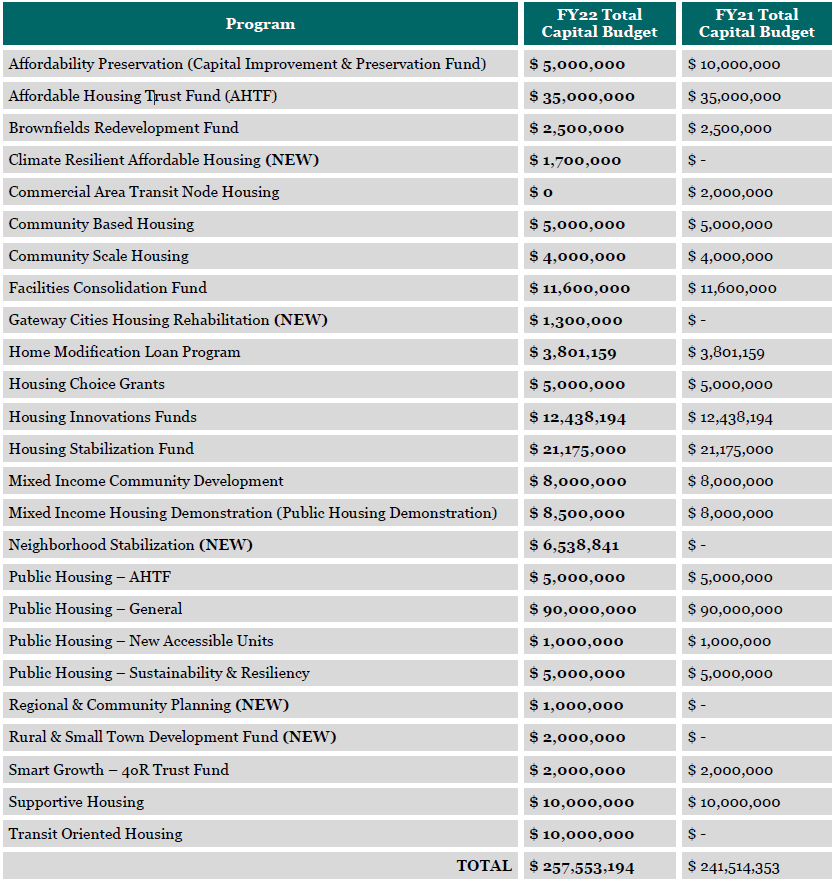On June 14, 2021, the Baker-Polito Administration released its FY2022 Capital Investment Plan, which includes resources for affordable housing and community development programs.
Highlights from the FY2022 Capital Budget for affordable housing and community development include:
- $146 million for the production and preservation of affordable housing
- $100+ million to support the state-aided public housing portfolio
- Support for new programs authorized through the Economic Development Bill intended to promote neighborhood stabilization, transit-oriented housing, and climate resilient affordable housing
Capital funding for affordable housing, largely distributed through the Department of Housing and Community Development (DHCD), produces and preserves housing for extremely low-, low-, and middle-income residents, including housing for seniors, persons with disabilities, and families and individuals experiencing homelessness. These resources support public housing authorities, affordable housing in smart growth locations, and first-time home buyers. Since 2015, capital investments have created and preserved 22,000 housing units throughout Massachusetts, including 19,000 affordable housing units.
The Massachusetts capital budget is supported mainly through borrowing — as compared to the state operating budget which is funding mainly through revenue from taxes. The Legislature authorizes borrowing for specific purposes. For example, in 2018, the Legislature passed a $1.8 billion Housing Bond Bill to authorize capital spending for affordable housing and community development programs for five years. The Governor then sets a bond cap – the cap on the amount of bonds that the state can use each year – based on the authorization amount from the Legislature and the state’s borrowing capacity. Each year, the Governor releases a capital investment plan taking into consideration the bond cap and authorizations. Other sources of funding can be included in the total capital investment plan. These other sources can include tax credits, federal funds, or other funds.
For a description of the affordable housing capital programs, please read pages 29–31 of the FY2022 Capital Investment Plan Report.

